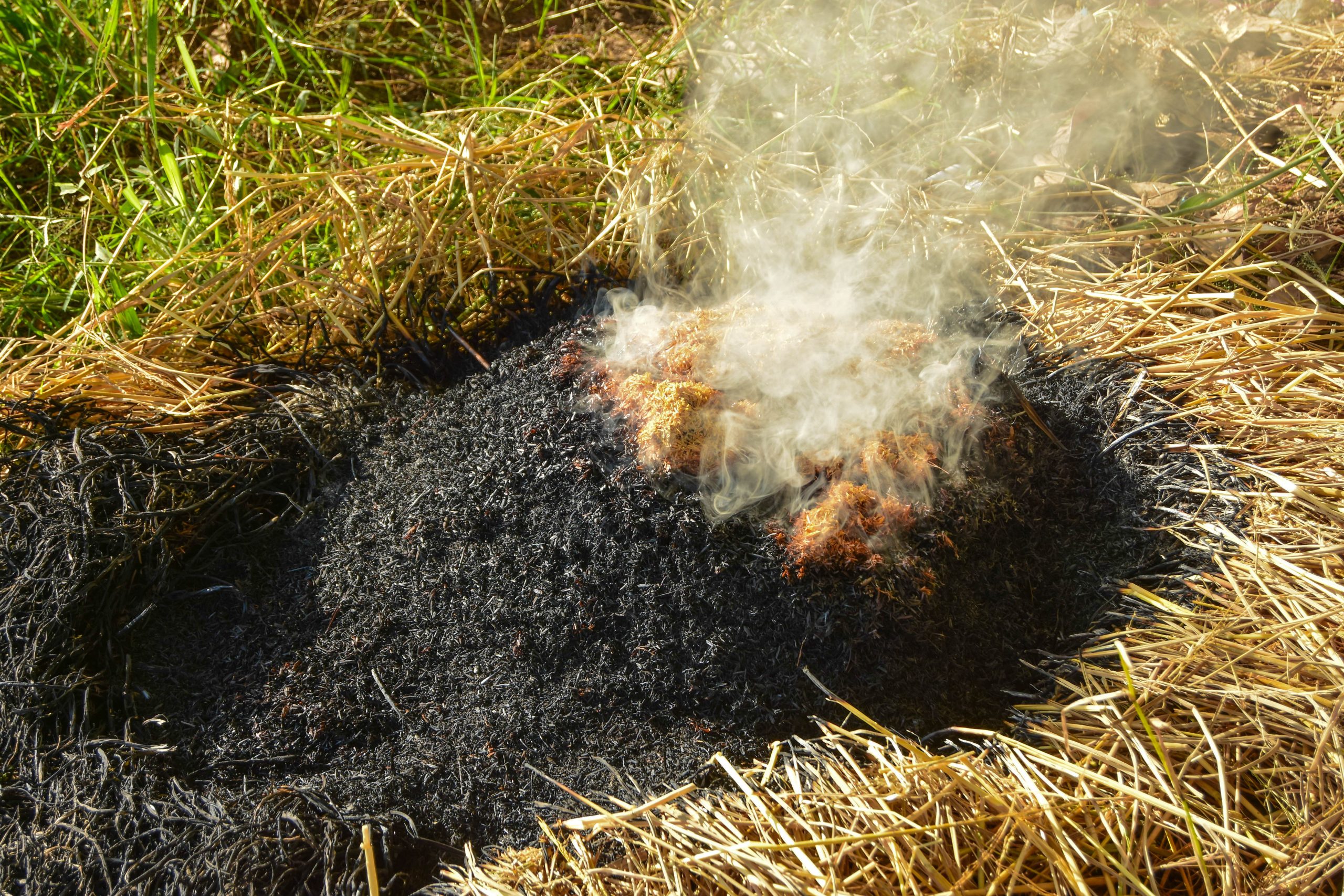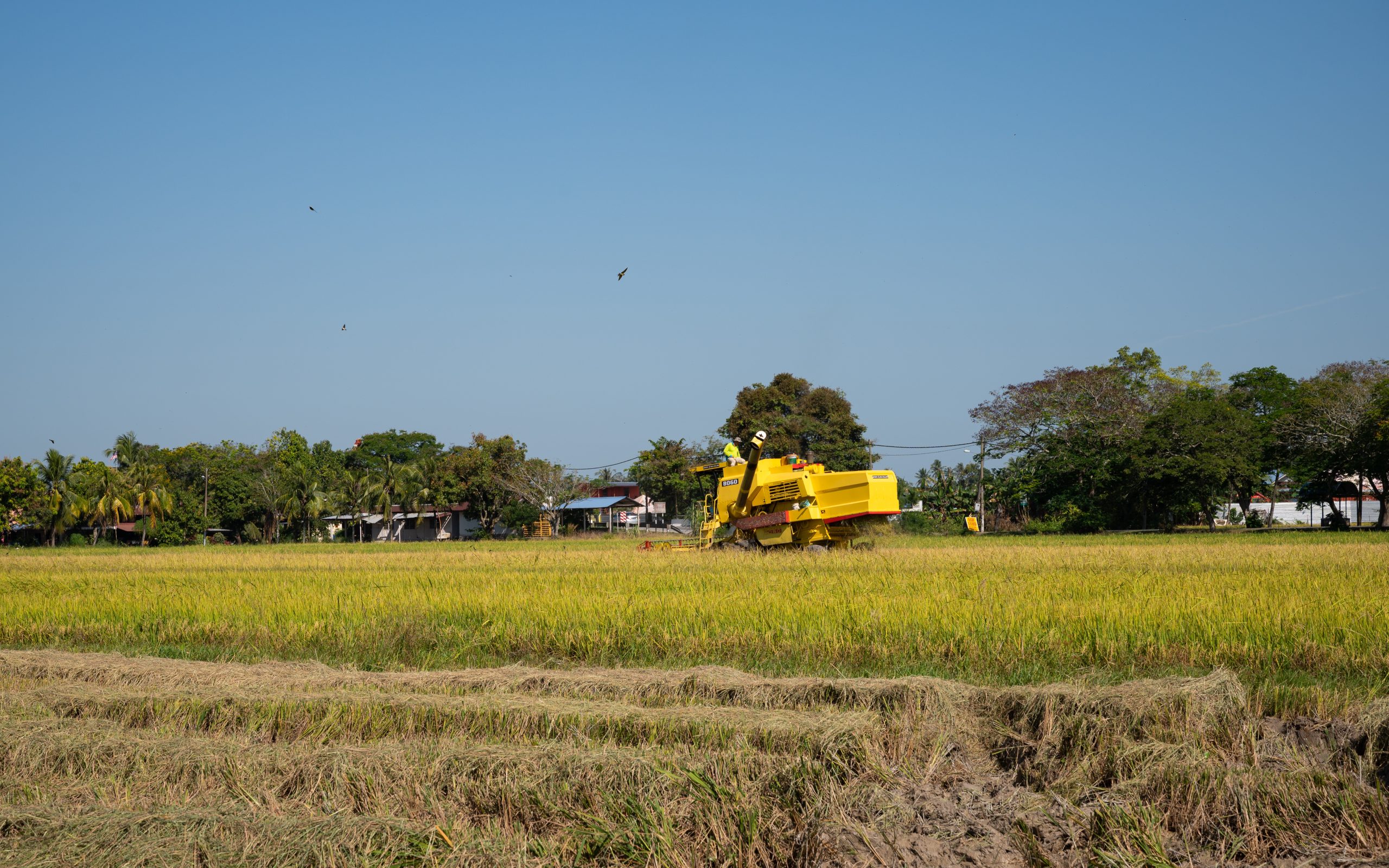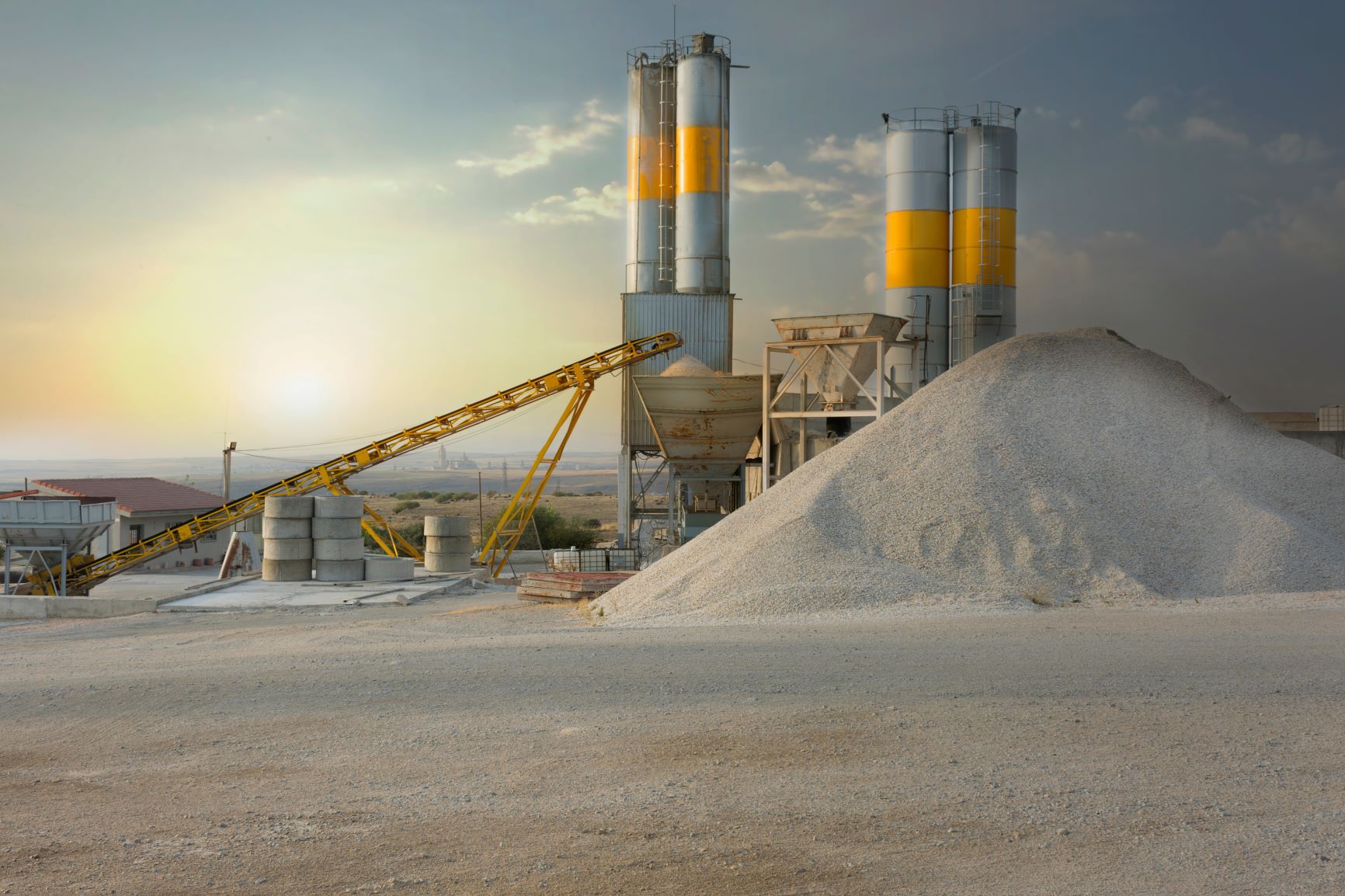The construction industry relies heavily on concrete, but did you know that its production process is far from environmentally friendly? Cement, a crucial component in making concrete releases a massive amount of carbon dioxide (CO2) and contributes to air pollution. In fact, cement production is the cause of about eight per cent of the world’s CO2 emissions[1].
Acknowledging this, researchers and scientists continue to search for solutions to reduce its carbon footprint. Numerous studies and research have been conducted to explore the potential of incorporating waste material to reduce waste and promote sustainability in the construction industry.

The burning of rice husk produces an ash that contains pozzolanic properties that may replace cement in manufacturing concrete.
From these efforts, they discovered that rice husk ash is a promising solution to the problem.
“By incorporating rice husk ash into the production process, the carbon footprint of concrete can be greatly reduced,” said Dr. Md Munir Hayet Khan, a senior lecturer from the Faculty of Engineering & Quantity Surveying, INTI International University.
Rice husk ash is a product generated from the burning of rice husks, the outer shells of rice grains, and has been found to have pozzolanic properties.
“The pozzolanic properties found in rice husk ash will react with calcium hydroxide in the presence of moisture to form calcium silicate hydrate, the main binder in concrete,” explained Dr. Munir, adding that due to its pozzolanic properties, rice husk ash has great potential as a supplementary cementitious material in concrete production, replacing a portion of cement and reducing the amount of cement used.

Dr. Md Munir Hayet Khan, a senior lecturer from INTI International University’s Faculty of Engineering & Quantity Surveying, believes that rice husk ash can benefit the construction industry, economy, as well as protect the planet in the long run.
Besides that, the benefits of rice husk ash on concrete’s mechanical performance and longevity have been widely recognized. Its integration into concrete production has been actively promoted to advance sustainability and improve the qualities of concrete.
In a recent study conducted by Dr. Md Munir Hayet Khan and twelve other international researchers titled “Integration of Rice Husk Ash as Supplementary Cementitious Material in the Production of Sustainable High-Strength Concrete”, the aim was to maximize the application of rice husk ash in concrete production and find a cost-effective sustainable solution to produce high-strength concrete.
According to him, the rice husk ash was taken from a mill in Kuala Selangor and incinerated inside a ferrocement furnace. The ash was then left to settle in the furnace for 24 hours before being extracted and pulverized with a machine.

Rice cultivation is one of Malaysia’s major industries as rice is a food staple for Malaysians.
“The rice husk ash was used to replace cement at 5 per cent, 10 per cent, 15 per cent, and 20 per cent by weight and the impact on the workability and consistency of the concrete was then evaluated using measurements such as slump, compacting factor, density, and surface absorption,” explained Dr. Munir.
Slump measures the consistency or fluidity of fresh concrete, while compacting factor measures the workability and compaction of concrete. Surface absorption and density are measurements of the concrete’s porosity and unit weight, respectively.
The evaluation considers the fresh properties, mechanical properties, microstructure properties, environmental impact, and cost-benefit assessment to determine the effect of rice husk ash on the properties of concrete and evaluate the feasibility and sustainability of using rice husk ash in concrete production.

Cement manufacturing impacts the environment at every stage of the process, including through emissions of carbon dioxide.
The results indicate that rice husk ash has the potential to reduce the dependence on conventional cement and lower construction costs. He added, “The use of 20 per cent rice husk ash resulted in the lowest CO2 emissions, and high-strength concrete can be produced with optimal strength observed at up to 10 per cent rice husk ash utilization.”
Dr. Munir claims that this finding can lead to waste reduction and sustainability in the construction industry, with the potential to not only reduce the carbon footprint but also make a positive economic impact.
“The use of waste products as a substitute for cement is a potentially sustainable solution,” he added.
Incorporating waste material such as rice husk ash into the concrete manufacturing process has the potential to protect the planet and promote sustainability. The dynamic development and implementation of rice husk ash in concrete manufacturing is expected to improve its acceptance in the industry and promote a more environmentally friendly alternative.